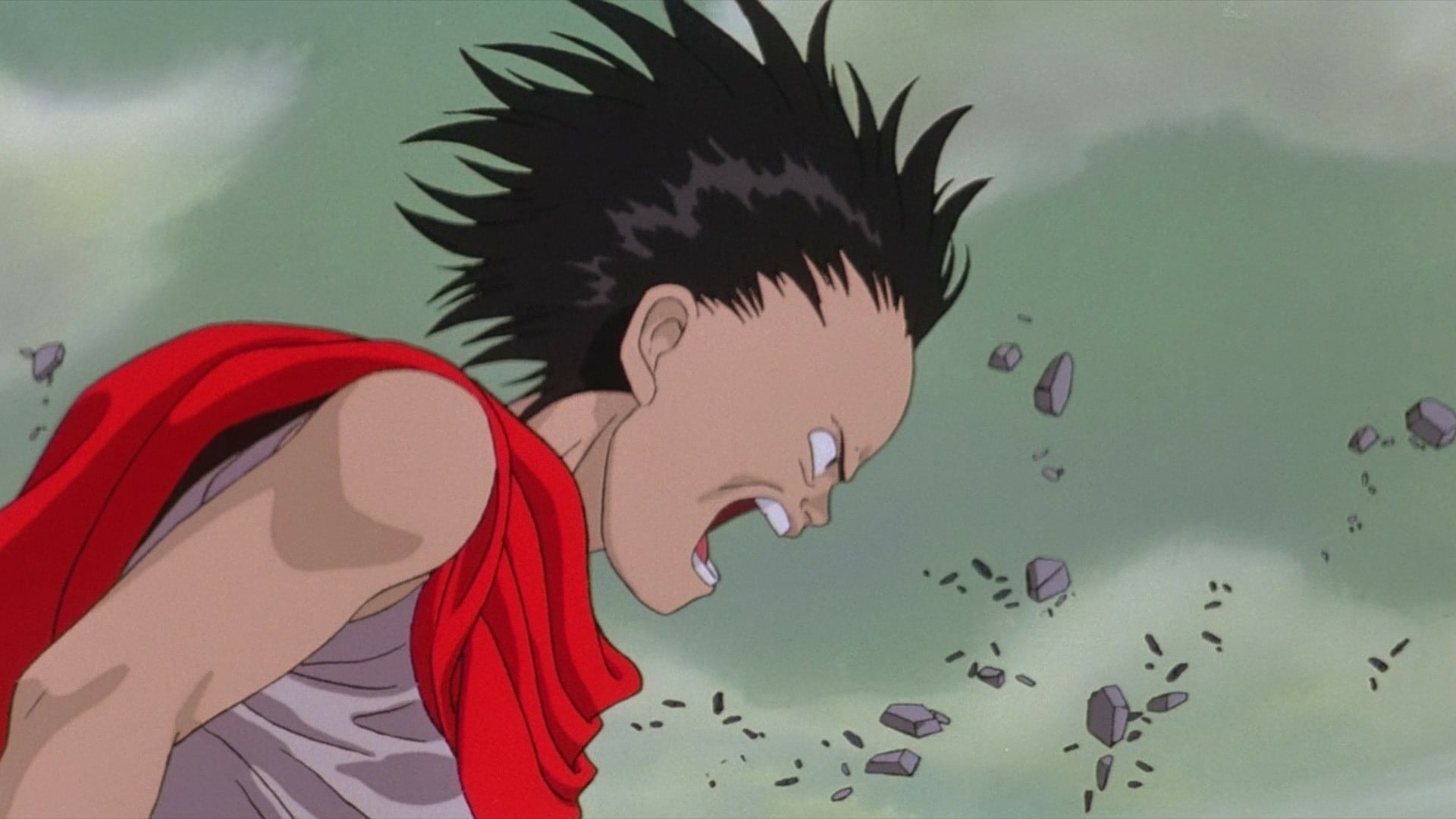Katsuhiro Otomo’s Akira is a visually and philosophically dense anime, unfolding over just a few days yet resonating across past and future timelines. The film begins with an apocalyptic explosion reminiscent of Hiroshima, which has long influenced Japanese science fiction. The source of this catastrophe is Akira, a psychic child whose godlike powers triggered the singularity that destroyed the world and shaped a new one.
Akira exists both as a metaphysical deity and as a physical presence beneath Neo-Tokyo, a city rebuilt amid chaos, flashing lights, cults, military operations, and biker gangs. The story follows two best friends, Kaneda and Tetsuo, as they confront the turmoil of this violent city.
Kaneda and Tetsuo’s contrasting destinies are hinted at early during a biker skirmish between rival gangs, the Clowns and Capsules. Both belong to the Capsules, but Kaneda is the confident leader. Tetsuo, seeking to prove himself, crashes into Takashi, a government-held psychic child, inadvertently receiving extraordinary powers. These abilities overwhelm Tetsuo, manifesting as terrifying visual and auditory hallucinations of Akira, which begin to consume him and push him toward a destructive path.
Tetsuo’s Transformation, Power Struggle, and the Catastrophic Consequences of Uncontrolled Ambition
As Tetsuo confronts Akira’s true power, he mutates into a grotesque, amorphous being of flesh and cells, losing control over his own body. The three ESPers, including Takashi, witness this and begin praying to Akira, recognizing the inevitability of a new world and Tetsuo’s release from mortality. Though Kaneda and Tetsuo’s ally Kairo survive, Neo-Tokyo is again decimated by a massive explosion, emphasizing the uncontrollable and godlike force of Akira.

Tetsuo’s destructive path stems from his desire for recognition and importance. Initially fearful of his abilities, his ego eventually dominates, transforming his fear into a dangerous assertion of power. His rivalry with Kaneda reflects a struggle for self-worth and revenge against those who doubted him. Tetsuo’s quest for supremacy demonstrates the lethal combination of inferiority and extraordinary power, which ultimately drives the story toward catastrophe.
Human Ambition, Hubris, and the Possibility of Renewal After Catastrophic Destruction
Otomo frames the film as a political allegory, examining humanity’s struggle for control and dominance. Colonel Shikishima embodies military arrogance, attempting to suppress Tetsuo’s rise with force. Meanwhile, cultists venerate Akira as a divine savior, naively assuming the cosmic events serve humanity. Both sides reflect self-importance and human hubris, showing how individual ambition can exacerbate collective destruction.
Despite devastation, the film ends with a glimmer of hope. Tetsuo and Kaneda, engulfed in Akira’s power, recall moments from their friendship, highlighting early signs of Tetsuo’s latent abilities. After the explosions, rays of light shine on Neo-Tokyo’s ruins, suggesting humanity might learn from past mistakes. The film closes on the question of whether society can break free from cycles of destruction, hinting at the possibility of renewal as survivors rebuild and reflect.



